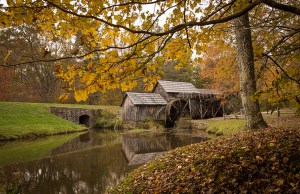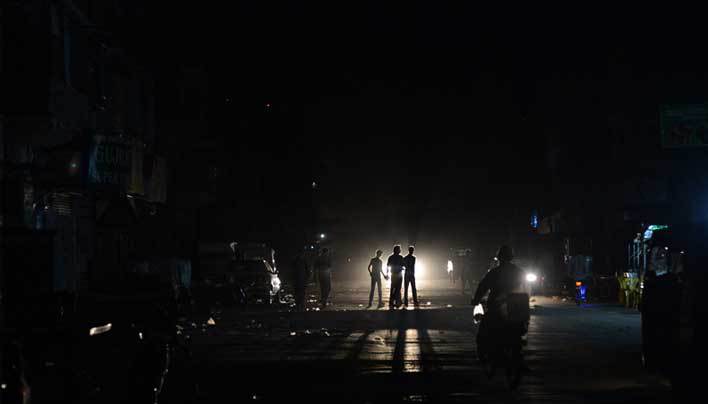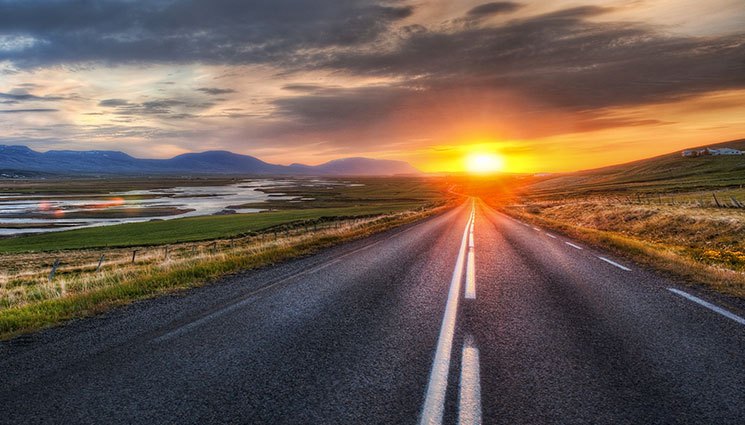Lessons from History – The Importance of Water
Throughout history, settlements form near water. The largest and most successful settle with plentiful water. There are a number of reasons for that. One, water really is life. We require water for drinking. We also use it for cleaning and laundry. As the human species advanced, we needed additional water for livestock. Then we became stationary, mastered various forms of irrigation, and bred our crops to become more and more dependent on water. Doing so allowed us to reap larger yields of sweeter and more mild crops, but it also tied us inexorably to water systems.
Historically we were further tied to water systems for faster and easier travel and trade, and we eventually turned to it for some of our labor. First with direct-labor systems such as grinding mills, then for the generation of power that could be sent across distances, water made life easier as well as sustaining it.
We are no less tied to water now than the caveman, Viking or European colonist. We just don’t always notice. And because most of North America enjoys easy, low-cost water, we aren’t great about conserving it.
Test Your Water Use
Want to see just how influential water is, and how much we use? Easy enough. Turn off the water at the main for a day. Remember to also tape or turn off faucets so you don’t empty any hot water heaters and end up with problems.
If you’re on a well, use your backup pump system. If you don’t have a backup system, one immune to fire and earthquake and the prepper-minded EMPs, you don’t actually have a water system. Turn it off.
Do it on a standard day. A day you’re not off backpacking, not working on your three-day bare-minimum drill doing a dry camp in the living room or backyard. Really ideally, do it in summer or autumn on the day(s) you’d be watering if you irrigate gardens, and on a day you’re hunting or harvesting some doves, chickens and rabbits.
For less-immersive comparison, just monitor the water gauge. For livestock on a non-metered system, fill containers that can have checks and tally lines added quickly.
Don’t let yourself become complacent or say, “well, that’s just because” to justify the amount of water used. Yes, our grooming standards can go down and change, and we can adopt some laundry methods and clothing treatment from the past that limit our uses more. Eventually, though, hygiene suffers.
If water’s out, something else is regularly going on, from “small” family-sized crises to storms and other disasters that affect the area and region. Roads and doctors may not be available if someone does become ill.
If anything, a crisis is a time to focus more on proper hygiene.
Handwashing, especially, can make a major impact on fecal-oral route infections, which tend to be the root of most of the illnesses laymen call “food poisoning”.
If your hygiene is dependent on wipes, run that test as long as you can to get the best possible average for how many you run through per day. Whatever your backup toilet system is, use that.
Use the data to create a baseline. How much do you use? How long will your stored water last? What seasons can you reasonably count on resupply?
From there, we look for ways to increase our sources and our efficiency in harvesting and using the water we can access.
A Double-Edged Sword

Water is one of the few things we can’t do without, and a functioning stream, river or lake system or even just a marsh can make a huge positive impact on our preparedness. They aren’t without hazards, however.
Flooding is a primary risk, although healthy marsh systems can actually mitigate and minimize floods. Still, the levee systems in the U.S. are aging and Midwest floods aren’t uncommon. Colorado and Tennessee have both had major, devastating disasters due to river- or creek-originated floods.
In a protracted crisis, the hydro dams put in by the Tennessee Valley Authority and in the Northwest are likely to suffer failures, on top of the failures we see washing out roads and creating mudslides and large floods right now.
In addition to those failures, there are mines and factories along our waterways these days. We’ve seen in just the last year what can happen as they fail and toxins leak out. Nuclear plants are routinely along waterways.
Failures combined with flooding can wash those contaminants into our farmlands, cities and suburbs, affecting creeks and wildlife long before and long after we can see the effects.

EPA Accidentally Turns Colorado River Orange With Pollution, Putting Drinking Water At Risk
Livestock are also a contamination risk to both well intakes and streams, just like human waste can already be right here in the U.S. Those risks are even more prevalent in some of the third-world nations that live without our level of basic services. Disease is rampant after earthquakes, hurricanes, and floods due to fecal wastes, and can be expected to go up after a major disaster.
Mosquitoes and the spread of ever increasing and previously “dead” diseases by insects are another risk.
Many of those risks can be limited with site selection and sculpting the land a little, by planting a few things that can help create buffers, predators, and sinks for water and its diseases and pests. An interruption in “easy” water after we’ve become accustomed to it is still the bigger and more likely threat for most of us.
While a gravity-driven well with a pressure-driven cistern would be ideal, not everybody is there. Not every well can either reach or hit the amounts needed for livestock and crop irrigation.
Pairing the unprecedented, super-filtration power of an all-new gravity block core with a hybrid ceramic shell, it removes 99.9999 percent of impurities, including bacteria, cysts, disinfectants, volatile organic contaminants (VOAs) and heavy metals.Because requires no electricity, it is ideal for home use, on or off-grid. |
Self-Sufficiency through Streams
A moving channel is a fantastic element to site. One aspect to watch for with small systems is that they don’t dry out in summer. Ideally, they won’t even dry up in the 25- and 50-year drought cycles.
Through much of history, moving water has helped us either with direct labor, such as the old mills we can still find here and there, or later by producing power for us to then use however we like.

Running streams, creeks and rivers can also turn water wheels that help us by lifting water into aqueduct systems or into cisterns that will produce enough gravity from water weight to push water further away from the source.
With even a small amount of motion, there are sling pumps capable of moving water for us. Even if a sling pump won’t reach all the way to gardens and livestock, saving us the bend-lift labor of filling buckets and being able to fill a cistern while we move the first load can make an enormous difference.
With greater rates of movement, we can create hydro re-directs to lessen some of our labors and in some cases produce small amounts of energy. We can dam small waterways to increase pressure or create channel- or pipe-based systems to generate power.
In some cases it’s not going to be a lot of electricity, but even the ability to slowly charge electric tools, appliances, and our music and photo devices can be a huge boost.
Slow it, Sink it, Spread it, Store it

In permaculture, there are several “S’s” promoted in regards to water. They simplify the desires to:
- Catch water for future use
- Prevent flooding even on the “daily” and seasonal scales, and by doing so prevent erosion and soil hardening via water (runoff, soil compaction)
- Allow water to infiltrate so roots can access it, and to lift the water table for springs and swale systems
- Keep chemicals and waste from running across landscapes and polluting our waters or gardens
Catchments are one way we capture water – storing it for later and preventing it from running wasted over the surface of the soil.

Water catchment on a huge scale was and still is used in Australia, with systems similar to water towers and large roof-to-cistern systems both above ground and below ground.
Sheep and cattle stations and small farmers also create nearly lock-style channels to store water for the three- to six-month dry seasons. Those systems can be duplicated in North America depending on local laws.
In places where regulations prohibit such large scale water harvesting or hoarding, it may be possible to obtain permits to put in lakes or ephemeral or permanent pond systems, which can function similarly and have added benefits for homesteads.
On a small scale, water can be stored using systems as complex as we like, or we can go simple and create pyramids or triangles of trickle-over buckets and barrels with no plumbing and just mesh or permeable cloth to prevent mosquito infestations.

Small, shallow swales sequester less, but can prevent damage from rains over years. Larger swales can hold more water, allowing that water a greater amount of time to infiltrate. That water then creates a “lens” beneath the surface of the soil and allows plants a longer period of time to access it.
The slope of the land and the soil type and structure play the biggest roles in the types and sizes of swale systems we put in.
Preexisting vegetation and the type of vegetation we want to put in, if we plan to move livestock through the swale systems and what type of livestock also affects what type of swale system will work best for us.
Reducing Reliance On Systems

We have to have some water, and ideally a constant source. However, even with the best of planning and siting, sometimes we run into droughts or damaged systems. One way to build resiliency to those is to lessen our overall dependence.
Silvopasture over turf can provide forage and fodder even in drought years, and lessen dependence on irrigated grains and delicate pasture and hay. Some silvopasture is coppiced, but most will be either pollarded or selective-drop of large limbs from each tree.
The type and number of livestock and the amount of labor desired affects what style of silvopasture is effective.
Our livestock selection can also lessen dependence.
Ducks tend to be wasteful of water, while with drip waterers, chickens can be highly efficient. Pigs really need a lot of water to gain weight efficiently, and they need regular access to it. Comparatively, dairy and meat goats need a little less access and less total water per pound of produce.

If we veer a little further away from the American norm, camels need less yet, and have traditionally been used for milk, meat and hides and in some cases angora just like llamas.
We can also look into more water efficient breeds from typically dry regions of the world. They may be more expensive as an initial investment and have less-efficient feed-milk-meat ratios, but in a survival situation, the fact that they do survive with little water may make them invaluable.
If we have a fair bit of property, we can also tailor habitat for hunting small game, and focus our water labors on egg and dairy producers.
Hugelkultur beds are another way to limit use and dependence on rainfall and irrigation. Once established, a properly sized and layered hugel bed requires almost no assistance at all. It retains and essentially generates moisture from within.

When we do use water, we can use it as many times as humanly possible instead of letting it run and flow past our fingers.
Gray water systems, using cooled cooking water in gardens or for livestock, and reclaiming runoff from sprouts and sprouted fodder for livestock or re-watering can all help decrease our total draw.
Then there are little things like using a cup of water to rinse while brushing teeth, and having catch basins for washing hands or rinsing produce that then gets used for laundry or put back into the garden systems – at least once, and in some cases, several times.
Water Is Life
We have always been dependent on water as a species, and civilization and modern post-industrial life has made us more so. However, we can look back at history and to some of the underdeveloped nations to find ways that we can harvest and store water against need, and in some cases, use water wheels and even small creeks or lake properties to help us move water or generate a little bit of power.
Pairing the unprecedented, super-filtration power of an all-new gravity block core with a hybrid ceramic shell, it removes 99.9999 percent of impurities, including bacteria, cysts, disinfectants, volatile organic contaminants (VOAs) and heavy metals.Because requires no electricity, it is ideal for home use, on or off-grid. |
There are a few tips here. The article about gardening in droughts has additional lessons from fairly recent history that can be applied to reduce water uses for human and livestock food production, large scale or small, urban or rural.
When we’re ready to delve into long-term disaster planning, water needs to be a focus. Without water, and a backup plan for water, all the rest of our preparations become null and void in a large-scale emergency.
Water can also be dangerous. It’s worth researching the local flood patterns, especially pre-levee system, and looking up the diseases, symptoms and cures common to waterways in third world nations and after disasters.
Throughout history, settlements form near water. The largest and most successful settle with plentiful water. There are a number of reasons for that. One, water really is life. We require










